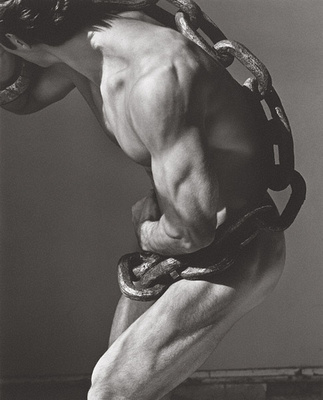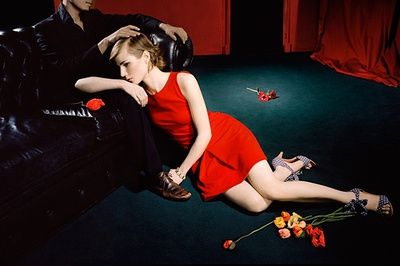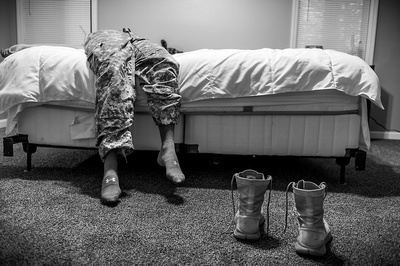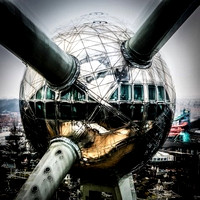Ken Rockwell is an (in)famous photography blogger. Interestingly enough, he tends to create some passionate reactions, with people loving or hating him. My take is that that says more about people talking about him than about Rockwell himself.
So why the passion? Does he have an intensely unique and antagonizing photography style? Well, no. He does tend to enjoy vivid, highly saturated pictures, but although that's not everybody's favorite style, there's nothing inherently wrong with that. You can enjoy his photographs or not (I'm not overly keen to be honest), but that's not what elicits so many reactions. What drives people crazy is his writing. Because his is a strongly opinionated blog. And it makes for a fine read in my view.
You see, his blog consists by and large of equipment reviews, and occasional photography tips (often targeted towards beginners or basic issues, although he has some very thorough articles too). And he enjoys making his opinions - some of which are outlandish - known loud and clear, and in frequently outrageous terms. A few examples:
- In his Leica section, listing reviews of Leica cameras, he includes the Fuji X100S, commenting "the future of LEICA photography. Not M-Mount; better"
- In his article about lens sharpness, he states (and it's the gist of the article) "lens sharpness doesn't matter"
- He has an article entitled "Fart for Fantastic photos"
- He routinely states, against common wisdom, that shooting Raw is a waste of time and that you should shoot JPEG. He often refers to film as Real raw
- He calls Program mode Professional mode, often stating that pros never use manual mode.
- Etc.
All of this seems to rub a lot of people the wrong way, and they get dismissive of Rockwell. Internet forums are full of people criticizing and hating him. There are entire webpages dedicated to telling people not to trust Rockwell. Because he goes against common knowledge, provides advice most people (including myself quite frequently) disagree with, etc.
That would be understandable if Rockwell didn't so often have his tongue planted firmly in his cheek and wasn't using hyperbole to communicate extremely valid points. The main gist of his blog and of most of what he writes boils down to "stop thinking your camera (or related accessory) is going to take great pictures. You are the one taking great (or lame) pictures". And in this day of internet commentary focused so much on what you should buy (and how you won't get by without the latest and greatest), he constantly strives to remind people that sure, great gear is nice, but it won't do anything if you can't use it, and energy is often better spent taking pictures rather than figuring whether this or that lense is "the one". Interestingly enough, although many people accuse him of just wanting to make money through advertising and kickbacks - which might or might not be true - he often seems to tell people not to invest too much in their gear.
Ironically, that doesn't stop him from providing some of the most useful, convincing and thorough gear reviews available. What all those hate pages about him miss is that most of his gear reviews are consistent with the general consensus - albeit with much more emphasis and hyperbole. Sure he often knocks Leica, but to be honest, it's refreshing to read a site that doesn't constantly make you feel like you're missing out by not having one. And despite his constant reminding that the technical aspects are not the sole determining factor in a great picture, his reviews cover all the technical ground in good detail.
So sure, his site needs to be taken with a pinch (or even a spoonful) of salt, but it's a fun and useful read. Don't use it as your only source, but seriously, could you recommend any website as your only source on any subject matter?
Deborah Bay is an emerging photographer that has won well-deserved praise for her "The Big Bang" series. While her other work is equally interesting, I'll focus mainly on that series.
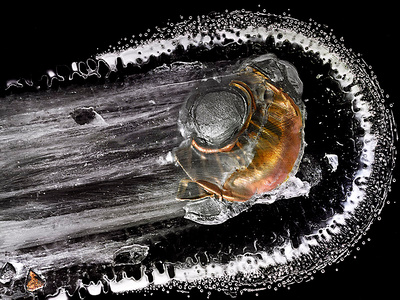 9mm Glock ballFrom Deborah Bay's "The Big Bang" series
The subject of the series is quite unusual: close-up color photography of bullets shot into plexiglas. Interestingly, that description would not entice me at all - it sounds boring. But the pictures are fascinating, aesthetically stunning and mind-boggling. I did not know what I was looking at before being told. One is reminded of cosmological photography as much as of anything else.
9mm Glock ballFrom Deborah Bay's "The Big Bang" series
The subject of the series is quite unusual: close-up color photography of bullets shot into plexiglas. Interestingly, that description would not entice me at all - it sounds boring. But the pictures are fascinating, aesthetically stunning and mind-boggling. I did not know what I was looking at before being told. One is reminded of cosmological photography as much as of anything else.
As someone passionate about contrast in all its meanings when related to photography, I love the stark and shocking contrast between the quiet and peaceful beauty of the pictures and the violence of what they ultimately depict. While these are controlled shootings of firearms and not acts of violence being represented, they are still remnants of powerful events, and document the usage of destructive force, and the (literal) impact it has. Yet they seem quiet and peaceful, resembling tranquil galaxies more than bloody murder. The sheer beauty is exquisite and the color treatment greatly - but subtly - highlights it.
 44 Magnum from Deborah Bay's "The Big Bang" seriesThe color adds to a mystifying picture
This once again goes to illustrate that acts which we think of as ugly - violence, explosions, debris - can take on a very real formal beauty on a pure aesthetic level. Of course, this might be less strikingly illustrated here than in disturbing works that emphasize violence on humans, but still, the apparent disconnect between what we might morally disapprove and what we find beautiful is very interesting.
44 Magnum from Deborah Bay's "The Big Bang" seriesThe color adds to a mystifying picture
This once again goes to illustrate that acts which we think of as ugly - violence, explosions, debris - can take on a very real formal beauty on a pure aesthetic level. Of course, this might be less strikingly illustrated here than in disturbing works that emphasize violence on humans, but still, the apparent disconnect between what we might morally disapprove and what we find beautiful is very interesting.
As such, we are introduced to Bay's work as an illustration of photography as an art of the unexpected. Beauty reveals itself in unlikely places, and the debris of a firearm being shot certainly was an unexpected place to look for as far as I am concerned.
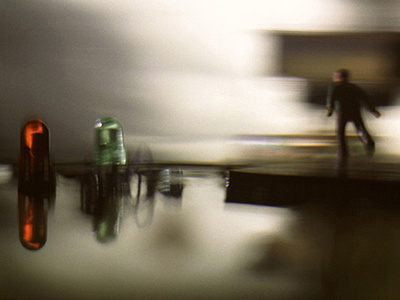 Untitled 4, from the series "The Fringes of Cyberia" by Deborah BayA taste of another of Bay's series, this one commenting on electronic waste
While I wished to highlight this particularly fascinating series of Bay's, the rest of her work is also very interesting, and confirms this interest of finding beauty in unexpected places or processes. I strongly encourage you to check her other work out too.
Untitled 4, from the series "The Fringes of Cyberia" by Deborah BayA taste of another of Bay's series, this one commenting on electronic waste
While I wished to highlight this particularly fascinating series of Bay's, the rest of her work is also very interesting, and confirms this interest of finding beauty in unexpected places or processes. I strongly encourage you to check her other work out too.
A lot of my favorite photographers have a sociological or psychological aspect to their work. This doesn't apply to Marten Lange, who's work is intriguing and bordering on the conceptual. But that doesn't stop his work from being fascinating.
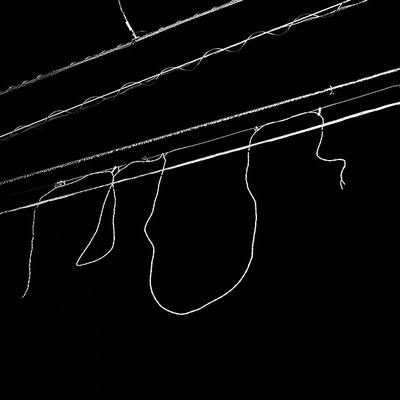 Anomalie #9, by Marten LangeA very boring subject, yet fascinating picture
Lange's work revolves around high contrasts. High contrast anythings really. Woodlands, the sea, crows, machines, everyday objects, anything and everything seems to be good enough for Lange. And he doesn't necessarily give these subjects a highly refined treatment. Quite to the contrary, the treatment is harsh, bordering on crude, with (sometimes extremely) high contrasts and composition that seems to be barely thought of. Of course, looks can be deceiving, and one should not infer that there isn't a lot of work in Lange's work. But it has a very raw and harsh look, and the subjects don't seem that interesting in and of themselves.
Anomalie #9, by Marten LangeA very boring subject, yet fascinating picture
Lange's work revolves around high contrasts. High contrast anythings really. Woodlands, the sea, crows, machines, everyday objects, anything and everything seems to be good enough for Lange. And he doesn't necessarily give these subjects a highly refined treatment. Quite to the contrary, the treatment is harsh, bordering on crude, with (sometimes extremely) high contrasts and composition that seems to be barely thought of. Of course, looks can be deceiving, and one should not infer that there isn't a lot of work in Lange's work. But it has a very raw and harsh look, and the subjects don't seem that interesting in and of themselves.
And yet, Lange's work is fascinating. The interplay between the very light and very dark make his pictures very interesting even if one can hardly care about the subjects themselves. The trivial and ordinary becomes fascinating, not on the level of what it means, but on the simple aesthetic level of what appears when the trivial is captured in stark black and white. Indeed, Lange demonstrates how photography can transform reality, or at least, reveal some underlying aspect of it.
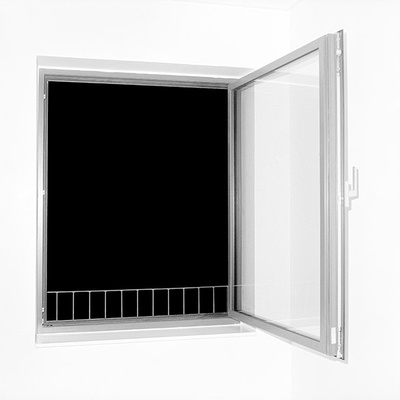 Anomalie #1, by Marten LangeA simple window becomes nearly indecipherable and utterly fascinating
And yet this newly revealed aspect is purely aesthetic, perceptual in nature. There is voluntarily no narrative, in Lange's work as he wishes the viewer to be "just like the stare of the camera, seeing but not understanding". And that is in itself interesting as a different approach to photography. At the absolute opposite spectrum from photojournalism that seeks to tell a whole story within a picture, Lange creates a purely formal body of work that is nevertheless striking and fascinating, sometimes even emotional. Definitely worth exploring.
Anomalie #1, by Marten LangeA simple window becomes nearly indecipherable and utterly fascinating
And yet this newly revealed aspect is purely aesthetic, perceptual in nature. There is voluntarily no narrative, in Lange's work as he wishes the viewer to be "just like the stare of the camera, seeing but not understanding". And that is in itself interesting as a different approach to photography. At the absolute opposite spectrum from photojournalism that seeks to tell a whole story within a picture, Lange creates a purely formal body of work that is nevertheless striking and fascinating, sometimes even emotional. Definitely worth exploring.
A blog post is always frustrating in that one has to choose what to address about the subject at hand, necessarily leaving a lot unexamined. This is true for all our subjects, but becomes truly excruciating when trying to discuss a photographer such as Henri Cartier-Bresson. My apologies for all that is left unsaid. In particular, Henri-Cartier Bresson is a man whose influence is felt not only through his pictures per se, but also through his attitudes and ideas. I'll focus on those, leaving deeper analysis of his pictures to someone else - or some other time.
Born in in 1908 and deceased in 2004, Cartier-Bresson was "only" active in photography from the 30s to the 70s. Yet his influence is second to none. To many, he is best known as the father of photojournalism, meaning that activity of capturing life and events as they occur in order to tell a (news) story. This is however debatable as many initiatives in the area pre-date Cartier-Bresson, and many other photographers might be given the title. More importantly, I feel his most crucial contributions lie elsewhere - though links with his photo-journalistic practice abound.
The key to Cartier-Bresson's works is the obsession with capturing the moment, something unique, and engraving it in eternity with photography. His approach, interested in details and unlikely occurrences is a constant inspiration to all photographers, and is an obvious direct or indirect influence on all street photography.
Furthermore, it can be argued that his work ethos was basically an anticipation of the photography by the masses we have seen in recent years. Interest in non-posed "real-life" photography, with little to no editing and use of the (at the time) most accessible tools signaled that photography need not be restricted to an artistic elite only familiar with the most intricate technique. Of course, technique is of critical usefulness, but it is not what makes a great photography, being merely a tool to the higher purpose of creating a great picture. Or, in the words of the master himself: "Technique is important only insofar as you must master it in order to communicate what you see...(...) In any case, people think far too much about techniques and not enough about seeing". This focus on "seeing" should always be in the forefront of any photographer's mind, whether a seasoned professional or an enthusiastic amateur. Time and time again one comes across outstanding photographs that were made with simple techniques or tools less powerful than now available, and conversely other pictures made with painstaking technique and impressive tools that are of little or no interest. While technique and tools are invaluable, they pale in comparison to the impact of the ability to see.
That brings us to Cartier-Bresson's decisive moment. In the famous book of the same name, he outlined his theories on photography that resonate to this day. That is quite an astounding feat, especially if one considers the book isn't that easy to buy these days. Out of print for many years, it has now been re-edited, but only in a luxurious and expensive edition that makes it inaccessible to many. Yet its influence was so great that its ideas have percolated into the photographer sub-conscience so to speak.
In it, he develops the ideas quoted above, but crucially also the idea that photography is about the decisive moment when one releases the shutter and captures a fleeting moment for all eternity. That is, to him, the moment a photographer is creative. The one where he recognizes a specific event, composition, or any element of significance that he will capture.
This has been unsurprisingly both inspirational and controversial. Inspirational because it is all that street photography and photojournalism are about. Controversial because this largely (but not completely) excludes posing and editing/post-processing from the scope of photographic creativity. And that's probably the most interesting part - the discussion and reflexion that can arise from such an idea. I'll likely develop my thoughts about this in a later post, but I'd love to hear yours in the meanwhile!
Totally irrelevant stuff
Slightly more relevant stuff
The important stuff
Herb Ritts was one of the most renowned fashion/portrait photographers of the 80s and 90s. In areas of photography where it is too easy to be formulaic and bland, his work always stood out. Here are a few suggestions as to why.
 Stephanie, Cindy, Christy, Tatjana, Naomi, Hollywood by Herb RittsA simple and beautiful treatment of the super-models of the day.
In many areas of photography, and fashion and portrait particularly, there has been a huge taste for edginess since at least the 80s. In fashion photography this has sometimes gone quite far, with provocation for provocation's sake providing empty shots with little aesthetic appeal and no substance. Herb Ritts' work was the polar opposite. His was photography focused on beauty and elegance, an archetypal figure of classy photography with a delicate cleanliness to it. Pristine black and white and flattering treatment give his pictures a tame and beautiful quality far from the disturbing and provocative style that has been seen so much elsewhere. Beauty and the subject for the subject's sake with no political overtones dominate Ritts' work.
Stephanie, Cindy, Christy, Tatjana, Naomi, Hollywood by Herb RittsA simple and beautiful treatment of the super-models of the day.
In many areas of photography, and fashion and portrait particularly, there has been a huge taste for edginess since at least the 80s. In fashion photography this has sometimes gone quite far, with provocation for provocation's sake providing empty shots with little aesthetic appeal and no substance. Herb Ritts' work was the polar opposite. His was photography focused on beauty and elegance, an archetypal figure of classy photography with a delicate cleanliness to it. Pristine black and white and flattering treatment give his pictures a tame and beautiful quality far from the disturbing and provocative style that has been seen so much elsewhere. Beauty and the subject for the subject's sake with no political overtones dominate Ritts' work.
Yet this never leads to boring shots in Ritts' case. Working within the constraints of a restrained and classy style never stopped him from creating powerful, enticing, beautiful, and sometimes humorous pictures. Quite the opposite, he often managed to subtly highlight interesting things about his subjects in ways a more aggressive style would not allow. Not only does this reaffirm how photography can act as a revelator, but this illustrates how self-imposed constraints can spur creativity and generate a unique view of the world. All the while retaining an extremely appealing beauty.
One of the sources of this beauty probably lies in Ritts' knowledge and use of classical - and I'm really talking about greco-roman art here - visual language. In many of Ritts' works one will find postures and attitudes reminiscent of greek gods and godesses. His subjects come forward as larger than life heroes radiating their glory. Yet his unique take and composition skills lend a definite modern flavour to his pictures.
These subtle mixes make Ritts' photography unique, revealing a unique worldview - mixing tradition and modernity - on his part as well as highlighting crucial aspects of his subjects. Yet another great photographer who spent his career in aletheia - revelation.
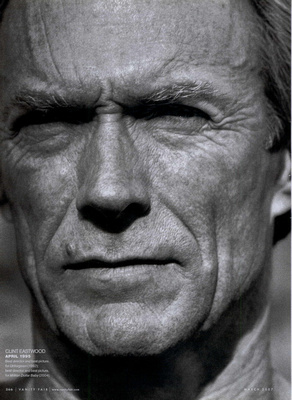 Clint Eastwood by Herb RittsA very revealing and powerful picture of Clint Eastwood
Clint Eastwood by Herb RittsA very revealing and powerful picture of Clint Eastwood
Kourtney Roy is a canadian photographer living in Paris whose work is intriguing, witty, elegant and smart. Hers is also a body of work that grows on you.
Apart from her fine-art photography, Roy also does fashion photography, and it shows. Hers is a refined world, with stunning wardrobes, glorious lighting, and elaborate poses. She works in color, and her colors are exquisite - more about them later. Yet while the high fashion interest shows, it doesn't dominate her work, it informs it if you will. Yes there is glamour in her shots, but it is far from the only component.
 From Kourtney Roy's "Fixed in no time" seriesBeautiful colours giving an old time feel informed by Eggleston and fashion photography
What one also sees is a retro feel. This is achieved by her particular treatment of colour, achieving beautiful, vibrant colors, that nevertheless have a feel of passed colors, giving a slightly old-timey sheen to her pictures. In this, one can trace the influence of William Eggleston, which Roy has identified as an inspiration. But it's not just the colors and lighting, the clothes, general tone and poses tend to remind of decades past (mostly the fifties and sixties). In some ways, one is reminded of the atmosphere of Mad Men. All the beauty and charm of such a time gone by are evoked, yet Roy's pictures are unmistakenably - and unexplainably - contemporary. Maybe it is because by going so far into a retro feel, she manages a singular feat: making her pictures take on a notable twinge of kitsch, yet keeping them slick and elegant. Being able to deliver this apparent contradiction is one of Roy's many achievements.
From Kourtney Roy's "Fixed in no time" seriesBeautiful colours giving an old time feel informed by Eggleston and fashion photography
What one also sees is a retro feel. This is achieved by her particular treatment of colour, achieving beautiful, vibrant colors, that nevertheless have a feel of passed colors, giving a slightly old-timey sheen to her pictures. In this, one can trace the influence of William Eggleston, which Roy has identified as an inspiration. But it's not just the colors and lighting, the clothes, general tone and poses tend to remind of decades past (mostly the fifties and sixties). In some ways, one is reminded of the atmosphere of Mad Men. All the beauty and charm of such a time gone by are evoked, yet Roy's pictures are unmistakenably - and unexplainably - contemporary. Maybe it is because by going so far into a retro feel, she manages a singular feat: making her pictures take on a notable twinge of kitsch, yet keeping them slick and elegant. Being able to deliver this apparent contradiction is one of Roy's many achievements.
While Roy's style is what first attracts the eye and makes one want to explore her works - and keeps providing long lasting enjoyment - her subjects are highly intriguing. At first glance, the vignettes she carefully poses seem typical to the decades after which the pictures are styled. They figure different women of different styles - though mostly in one form of glamour or another. But close inspection reveals that these different women are (nearly) all Roy herself, assuming different styles in such a complete
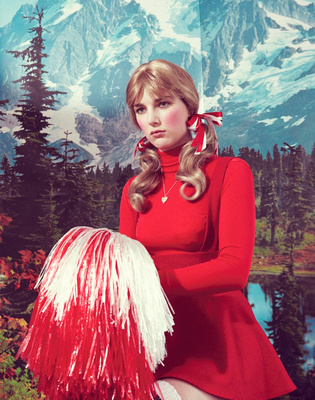 From Kourtney Roy's "The ideal woman" seriesWhile the picture is beautiful, the title of the series and the look on Roy's face makes one wonder, is this simply aesthetically pleasing, or an objectification of women, and what does this say about society?
way as to be unrecognizable at first sight. This realization, and closer inspection of poses and composition, lead to interesting and frequently conflicting assessments of the subject and what it conveys. While fashion and period piece inspiration tend to give a vaguely objectifying quality to the depiction of women in Roy's pictures, the photographer's gender and inclusion as main subject tend to offset this quality by adding a touch of irony and self-reflexiveness. As such, the feeling I get is that of a re-appropriation of aesthetic codes deemed potentially offensive because of the female objectification they imply into a positive self-affirming artistic statement. It is utterly possible this says as much about myself as it says about Roy - her photography seems deliberately open to interpretation.
From Kourtney Roy's "The ideal woman" seriesWhile the picture is beautiful, the title of the series and the look on Roy's face makes one wonder, is this simply aesthetically pleasing, or an objectification of women, and what does this say about society?
way as to be unrecognizable at first sight. This realization, and closer inspection of poses and composition, lead to interesting and frequently conflicting assessments of the subject and what it conveys. While fashion and period piece inspiration tend to give a vaguely objectifying quality to the depiction of women in Roy's pictures, the photographer's gender and inclusion as main subject tend to offset this quality by adding a touch of irony and self-reflexiveness. As such, the feeling I get is that of a re-appropriation of aesthetic codes deemed potentially offensive because of the female objectification they imply into a positive self-affirming artistic statement. It is utterly possible this says as much about myself as it says about Roy - her photography seems deliberately open to interpretation.
In a way, it seems that Roy's stance could be considered a post-feminist one. By becoming the "objectificator" - of herself to boot - she makes the compositions more acceptable. She seems to say "It's ok when freely done by willing and conscious participants" - a notion that could be linked to sex-positive feminism. But despite whoever stands behind the camera, the viewer is reminded of the fine line between innocent play and aesthetic construction on one hand, and degrading objectification on the other. This constant interplay, added to the frequently undecipherable attitude she has on her pictures - mixing boredom, sadness, mischief and many more - means the viewer is perpetually creating his own understanding of what is going on in the picture. As such, these are pictures one is compelled to come back to, to try and understand the mystery underlying the vignette.
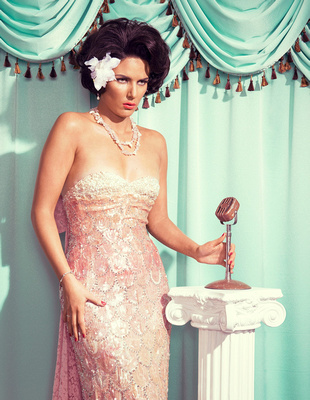 From Kourtney Roy's "The Autoportraits' seriesWho is the woman you have seen in all these pictures?
Finally, Roy's metamorphoses from picture to picture are a classic case of clever questioning of identity and appearance, where one wonders who is actually in front of the camera (and in her case, also behind it), and which permanence, if any, can be perceived through the numerous changes. What defines identity, and which relationship, if any, is there between identity and appearance? Roy's work is constantly generating such questions.
From Kourtney Roy's "The Autoportraits' seriesWho is the woman you have seen in all these pictures?
Finally, Roy's metamorphoses from picture to picture are a classic case of clever questioning of identity and appearance, where one wonders who is actually in front of the camera (and in her case, also behind it), and which permanence, if any, can be perceived through the numerous changes. What defines identity, and which relationship, if any, is there between identity and appearance? Roy's work is constantly generating such questions.
Roy thus composes pictures with intriguing subjects of which more can always be learned by further observation, forcing us as viewers to assess our beliefs and understanding of the vignettes she creates, and reveals herself in her preoccupation and as permanence through the change of characters she assumes. Once again, it is a powerful interplay between what is revealed of the subject, the viewer and the photographer that leads to great photography. Because if much is mysterious about Roy's pictures, one thing is clear as day: her work is always astounding.
Mary F. Calvert is a renowned photojournalist, recipient of the Robert F. Kennedy Journalism award (twice) and the Canon Female Photojournalist award. She doesn't do funny; her work focuses on (quoting her website) "the under-reported humanitarian struggle of women and children worldwide to secure the most basic human rights". We're talking serious stuff. And it's both moving and beautiful.
As is stated all over this website, I believe that photography lies at the intersection of the subject, the photographer and the observer, and that it should reveal something about one of the three. Great photography reveals something about all three. By this criterion - as by many others - Calvert's work is obviously great photography.
 Mary F. Calvert, The Battle Within: Sexual Assault in America's MilitaryThe horror of losing a child, but also the beauty and dignity of a bereaved parent
Calvert aims at revealing things about her subjects, and she does so in a very effective manner. As most masterful work about hard subjects, her photography doesn't fall prey to the mistake of a black and white (pun not intended) portrayal of the world. Though showing pain and suffering, she manages to let glimmers of hope shine through, to show strength, resilience, and beauty within horrible situations. This gives us a better understanding of the subtleties of her subjects, and ends up making them more real, because they exist with more dimensions than simply the struggle for which they were, we suppose, chosen to be included in Calvert's body of work. So of course Calvert's photography reveals a lot about her subjects.
Mary F. Calvert, The Battle Within: Sexual Assault in America's MilitaryThe horror of losing a child, but also the beauty and dignity of a bereaved parent
Calvert aims at revealing things about her subjects, and she does so in a very effective manner. As most masterful work about hard subjects, her photography doesn't fall prey to the mistake of a black and white (pun not intended) portrayal of the world. Though showing pain and suffering, she manages to let glimmers of hope shine through, to show strength, resilience, and beauty within horrible situations. This gives us a better understanding of the subtleties of her subjects, and ends up making them more real, because they exist with more dimensions than simply the struggle for which they were, we suppose, chosen to be included in Calvert's body of work. So of course Calvert's photography reveals a lot about her subjects.
Calvert's work also tells us about her. To put it very simply, her concerns are fairly obvious from what she chooses as subjects - the plight of others weighs heavily on Calvert's mind. Yet she manages to reveal beauty in otherwise horrendous circumstances, displaying her concern for aesthetics as well as ethics. And then it is striking that some of her strongest pictures are defined by an absence, the subject being guessed at, seen as absence, barely hinted at. This approach, for someone tackling harsh realities, indicates a concern for displaying the horrors of the world with empathy, a care for the individuals, and a strong sense of restraint so as not to invade too strongly on the lives of the people she depicts. In other words, her work reveals Calvert to be a humanist.
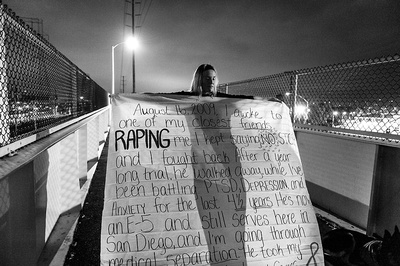 Mary F. Calvert, The Battle Within: Sexual Assault in America's MilitaryA powerful confrontation that begs the question: what would I have done to help, how would I have reacted, how can I help now?
Then of course confronting Calvert's pictures is an experience for the viewer. How we react tells us about ourselves. It is interesting to note where we empathize, where we feel indignant, where we feel the need to look away - even though none of her pictures are voyeuristic in any way. Our own priorities and feelings towards the difficult subject matter she puts forward to us become clearer. What we consider beautiful also gets put into question, as we find pictures of appalling situations nevertheless beautiful.
Mary F. Calvert, The Battle Within: Sexual Assault in America's MilitaryA powerful confrontation that begs the question: what would I have done to help, how would I have reacted, how can I help now?
Then of course confronting Calvert's pictures is an experience for the viewer. How we react tells us about ourselves. It is interesting to note where we empathize, where we feel indignant, where we feel the need to look away - even though none of her pictures are voyeuristic in any way. Our own priorities and feelings towards the difficult subject matter she puts forward to us become clearer. What we consider beautiful also gets put into question, as we find pictures of appalling situations nevertheless beautiful.
I find it interesting that though Calvert provides interesting and enlightening captions to her pictures, they are absolutely not necessary to "understand" and feel them. They stand on their own and call the observer to better understand them. That is the sign of powerful work.
For the sake of consistency, all pictures illustrating this post are taken from her series "The Battle Within: Sexual Assault in America's Military Part 2: The Survivors" series, but I urge you to take a look at her other projects as well. Calvert's is beautiful and important work.
Ansel Adams is one of the undisputed masters of landscape photography. His works are influential to this day, and this post aims at showing why he remains extremely relevant, while amusingly informing discussions that go on in the digital world, despite the fact he passed away in 1984.
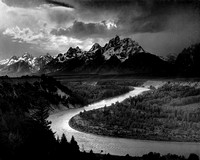 Ansel Adams - The Tetons and the Snake RiverAnsel Adams - The Tetons and the Snake River
Even if you've never heard his name, chances are you've seen his works. Magnificent, looming black and white landscapes. Basically defining what many think of when asked to consider what a traditional landscape photograph should be. The picture featured here is typical in that regard.
Ansel Adams - The Tetons and the Snake RiverAnsel Adams - The Tetons and the Snake River
Even if you've never heard his name, chances are you've seen his works. Magnificent, looming black and white landscapes. Basically defining what many think of when asked to consider what a traditional landscape photograph should be. The picture featured here is typical in that regard.
Do keep in mind Adams lived from 1902 till 1984, being most active between the 30s and 60s. If at first glance your reaction is along the lines of "ok, this is very traditional work", realize that our notion of what a traditional landscape photography looks like owes an immense lot to Adams' work.
From here on, it would be easy to continue lauding his photographs and to simply comment some of his breathtaking works, but it seems more interesting to focus on what makes his black and white photography so interesting, and how that can inform modern debates in photography.
In large part, it is the stark contrasts between very dark and very light - and the exquisite use of the range in between - that make his pictures so magnificent and fascinating. How did he achieve this?
Obviously, deep knowledge of photography technique lead him to excellent exposure. Proper set-up and use of his camera were critical, as was identifying the right moment and light to take his photographs. But a key element in Adams' work was his darkroom technique. He used dodging and burning extensively and masterfully, and that is very interesting for contemporary discussion of the place of post-processing in digital photography.
It has become commonplace to criticize "photoshopping", by which people mean changing a photograph from what was actually taken by the camera, as if photography was all about the capture and ended at the moment the photographer releases the shutter button. It's common to have a non-photographer ask you whether you modified the picture after you took it and seem disappointed when you say you did. Even seasoned photographers are sometimes heard professing that a "good" photographer gets his exposure in camera and doesn't tinker with it afterwards.
Remembering that a classic film photographer like Adams worked extensively in the darkroom to lighten and darken specific areas of his photographs to produce the photograph he had visualized in his mind when taking it is thus crucial. What he showed wasn't the "pure" photograph taken by his camera, but a conjunction of what his camera had captured and his work on this material to achieve the picture he initially desired. We are not talking about correcting a mistake here (although that might of course happen too), but about artistic expression and creating the intended work of art.
Burning and dodging were very complex and required expertise in the film world : dodging meant physically blocking out an area of the enlarger lens to avoid light hitting the paper, whereas burning required masking out all the picture except for the area to be burned to increase the light on the paper. On the other hand, in the digital world a few clicks are enough to dodge and burn. But these differences are irrelevant. Work done in Photoshop, Lightroom, or any other comparable software package aims at the exact same thing as Adams' complex darkroom work: obtaining the desired tones, irrespective of what "came out of the camera".
In other words, photography is all about the relationship between the subject, the photographer and the viewer. The camera and whatever other tools might be involved are only there to facilitate this triangular relationship.
That might be one of the most important lessons Adams provided us; the aim of photography is that the final work looks the way you intended it to. All the rest - and singularly how you obtained your end result - is a means to an end, and utterly unimportant. While techniques might be interesting to practitioners, they are totally irrelevant when evaluating the artistic merit of the works.
So the next time somebody starts telling you that so and so's work is "too processed", remember Ansel Adams and ask the only question that matters: "ok, but does it have artistic merit in your eyes?".
As those who read the about page know, Aletheia is about attempting to reveal... stuff. Largely through my own photography. But it seems only fitting to also shine the spotlight on other photographers whom I find interesting.
My first pick is nearly a lazy one. Laurent Dequick is thankfully gaining a healthy reputation and growing into the highly successful photographer he deserves to be. People who are kind enough to consider my little website are likely to have seen or heard of Laurent's work. But then again maybe not, and in any case, he deserves any additional praise he can get.
Laurent's work is unique and inspiring. Most of it revolves around multiple exposures of urban landscapes melded into one striking photograph. But if you are thinking about HDR, think again, the aim is quite different. We're not talking about superimposing identical shots with different exposure levels to increase dynamic range here, but of mixing up the exposures in a "misaligned" fashion if you will. This creates a totally new image, the effect of which has sometimes been described as "vibratory" - see the "vibrating" Atomium picture here - and Laurent himself named one of his series "Vibrations urbaines" to reflect this. It's really a very personal style and one you have to see to appreciate fully.
There are many reasons I am in love with Laurent's work.
First, it just looks stunning. On a purely aesthetic level it's wonderful, a very beautiful body of work that holds me in awe. That alone would make it worthwhile.
But it goes further. Laurent started out as an architect before being a photographer, and it shows. A deep understanding and love of the urban landscapes he depicts permeates Laurent's work. I love cities and urban landscapes too, and here is a photographer that depicts cities in a beautiful, glorious way. His unique technique underlines their liveliness. It's a breath of fresh air to have this playful representation of cities, when so much photography tends to focus on the darker or grittier aspects.
In typical "aletheia-revelatory" fashion, Laurent is basically revealing the intrinsic beauty of subjects some might take for granted or even find ugly at first glance. I have a deep appreciation for any work that can reveal non-obvious beauty, and Laurent's definitely fits that bill. Because while many will acknowledge the beauty of Venice or Barcelona, two of his subjects, it will come as a surprise to some to be so delighted by the beauty of Hong Kong or even some unorthodox views of London or Antwerp.
Laurent's work also basically fingers its nose at the notion that only photography adhering to a strict set of rules is worthwhile. For starters, it ridicules those people who would reject digital post-processing as unworthy of photography. Laurent's way of working is obviously post-processing heavy, without this being detrimental to the art, quite to the contrary. Interestingly enough, it seems to me that like most good post-processing, it actually tells us more about the actual subject than a "neutral" treatment would have. Furthermore, it can sometimes be argued that Laurent plays with, and occasionally discards, typical rules of composition, here again to great effect. Of course, deep mastery of traditional photography rules is evident in his work, but this mastery allows him to bypass them efficiently when it serves his purpose.
Finally, it should be noted that he is an extremely friendly and interesting individual. When I met him at an opening, I had the chance to chat and laugh with an agreeable, smart, witty and humble fellow. This changes nothing about his art, but makes it all the more pleasant to recommend him. Please do check out his work if you don't know it, and consider buying his still quite affordable art - it won't remain that affordable for long.
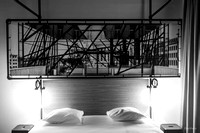 The winning shot in contextMy picture as it appears in the room
The winning shot in contextMy picture as it appears in the room
This first post will do something that won't be the main purpose of the blog itself : a little bit of self-promotion. One of my pictures was selected to ornament a room in a new hotel in Brussels : the Zoom Hotel. Given as this was a contest, it is quite pleasing to be selected, along with 30 other photographers, each having one or several pictures ornamenting a room. When seeing the other selected pictures, of high quality, it becomes an honor to be in such company. Interestingly, Zoom Hotel chose to use bed width (read "panoramic") prints of the pictures, while retaining a relatively low height. This means they cropped the selected photographs - with the photographers' approval of course. While we had given our approval to the cropping, we didn't know in advance how exactly it would look, and I have to say the hotel designers did excellent work bringing out very interesting images out of the original pictures. The end product can be seen as a collaborative effort between photographers and hotel designers, both visions meshing for a striking result.
The winners were invited to a very friendly drink Monday evening. It was great talking with talented photographers, and with the owners of the hotel. Very interesting and open conversations about the business of photography and the hotel business. It was a highly gratifying experience, and I'm proud to have been a part of it.
Enough with the chest-thumping.
 Cameras & cameras...Loads of cameras are used to decorate the hotel
Cameras & cameras...Loads of cameras are used to decorate the hotel
The Zoom Hotel has a great concept. It centers, as its name suggests, around photography. The decoration features old cameras, photographer chairs and the like, arriving at a very nice mix that is appealing and constitutes a very different experience from other 4 star hotels. It also includes a very atypical and cozy bar with a special focus on premium beers not so easily found elsewhere. And also free wi-fi... Taking into account it's the same founder team who created the fantastic Vintage Hotel, I have no doubt they will succeed here again. The hotel will likely appeal beyond business clientele to many people enthusiastic about photography, and such success will be well deserved.
Even if you don't need a hotel in Brussels, I highly recommend you check it out, if only for a drink. And no, I have no financial interest in the success of the hotel, this is really from the heart.
While I have a small gallery of pictures of the Zoom Hotel, you can find other pictures of the hotel taken by other winners of the contest here (Eric Ostermann) and here (Sophie Voituron).
 Thirsty for photography?The winners got to have a nice drink...
Thirsty for photography?The winners got to have a nice drink...
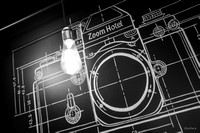 Zooming in and outThe hotel's decoration is fully based around photography
Zooming in and outThe hotel's decoration is fully based around photography

